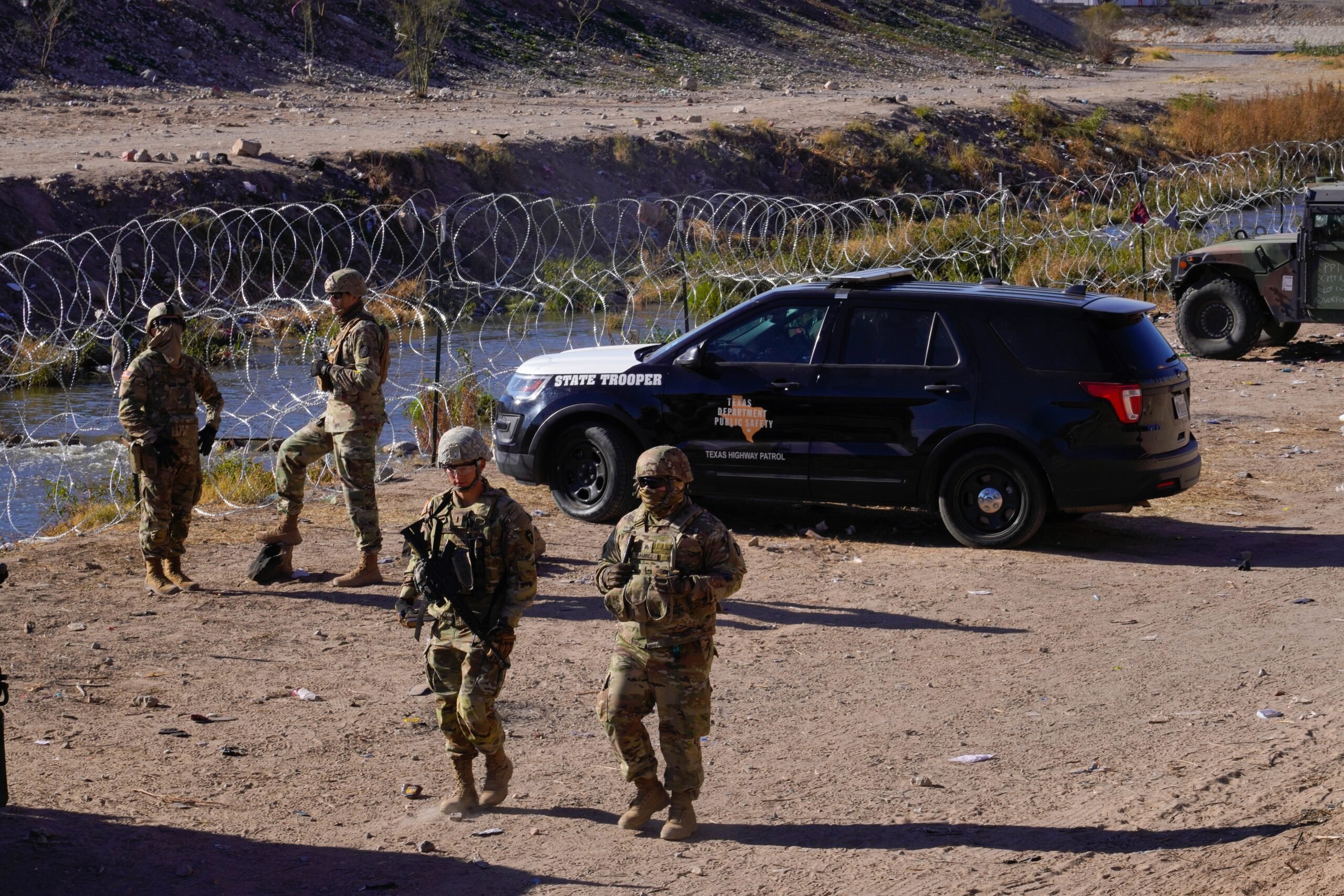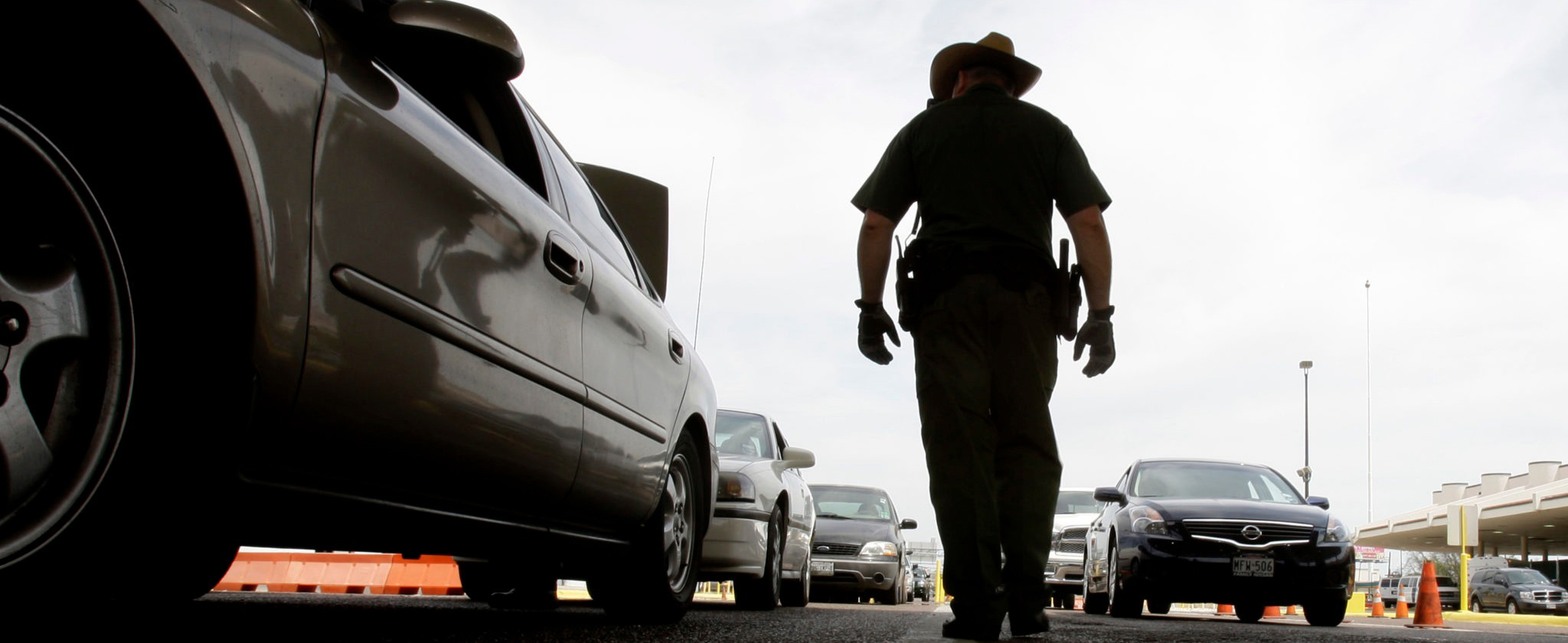
U.S. and Mexican Officials Collaborating to Stop Asylum-Seekers, Attorneys Allege
A new petition with the Inter-American Commission on Human Rights “highlights the reality of the U.S. working hand in glove with the Mexicans to completely shut down bridges.”

Above: Asylum-seekers waiting on one of the international bridges connecting Texas and Mexico.
Elsa, a Guatemalan living in Southern Mexico, knew something was wrong. Her husband began traveling a lot without explanation, and physically abusing her and their two kids. When she eventually figured out that he’d gone to work for a cartel, she left him. But in 2016, the gang came after her to collect on debts the ex-husband had skipped out on. She fled to other Mexican towns, but the cartel men tracked her down. Then she went back to Guatemala, but they found her there, too. Finally, in September, Elsa decided to gamble on Uncle Sam — but the foot of the Reynosa-Hidalgo bridge was as far as she would get.
The Trump administration has repeatedly insisted that asylum-seekers should follow the rules by turning themselves in at ports of entry. Elsa tried to do just that. As a legal Mexican resident, she even had proper documentation for herself and her two children. Still, a Mexican customs agent stopped her at the turnstile and told her she couldn’t pass. He yelled at her that they were abusing their Mexican status by seeking asylum in the United States, and he threatened to tear their papers to shreds. Scared, the family slunk back into narco-ravaged Reynosa, and into total uncertainty.
The story of Elsa, whose name the Observer has changed for her protection, was included in a petition filed last week with the Inter-American Commission on Human Rights, a 59-year-old organization based in Washington, D.C., that investigates abuses in the Americas and issues recommendations to offending nations. The petition, filed by immigration attorneys working in the Rio Grande Valley, describes a systematic conspiracy between U.S. and Mexican customs agents to prevent asylum-seekers from requesting protection. The attorneys are asking the commission to tell both nations to stop stonewalling the law-abiding migrants.

Since June, the lawyers allege, Mexican customs officials along the Texas-Mexico border have been doing something virtually unprecedented: stopping asylum-seekers from entering the bridge, and if the migrants lack proper Mexican travel documents, the Mexican agents detain and even deport them. If an asylum-seeker makes it onto the bridge, U.S. customs officials call their Mexican counterparts to retrieve them; the Observer documented this phenomenon in a June story cited in the petition. In Nuevo Laredo, according to sworn affidavits from two Central American asylum-seekers, Mexican agents have demanded bribes of $500 per person to get onto the bridge. And in September, in Reynosa, they also started rejecting people, like Elsa, with Mexican papers.
“This petition highlights the reality of the U.S. working hand in glove with the Mexicans to completely shut down bridges, in violation of a number of human rights prohibitions,” said Jennifer Harbury, a longtime Rio Grande Valley attorney. Harbury has spent months documenting problems at the bridges and provided the majority of the information in the filing. According to Harbury and an affidavit from longtime Brownsville activist Mike Seifert, the international collaboration began after public outcry over long lines of asylum-seekers baking in the sun for weeks on the U.S. side of the bridges.
Harbury says in the filings that numerous Mexican agents at the Reynosa bridge have privately told her that the two governments are working together, and they’ve expressed frustration at doing the United States’ “dirty work.” Two other witnesses — a journalist and an activist — wrote similar affidavits. But U.S. customs agents have told Harbury that the Mexicans are acting alone, and a September letter she sent to Homeland Security Secretary Kirstjen Nielsen has gone unanswered. The United States began pressuring Mexico to stop migration at its southern border in 2014, and last month, Trump signaled he would redirect $20 million in foreign aid to beef up Mexico’s deportations. Neither U.S. nor Mexican immigration officials responded to Observer requests for comment.
The United States is unlikely, Harbury said, to heed the eventual request from the human rights commission. For one, the U.S. government rejects the authority of the commission’s enforcement arm, the Inter-American Court of Human Rights in San José, Costa Rica. (The same court recently ruled that many Latin American countries must recognize same-sex marriage.) But Harbury has higher hopes for Mexico, which is subject to the court and has an incoming leftist president in Andrés Manuel López Obrador. “I think the new president of Mexico is not going to want the commission saying they’re running dogs for Uncle Sam,” she said.
In turning the bridges into hostile territory for asylum-seekers, the Trump administration has made a mockery of its own stated immigration goals.
If Mexico stops its collaboration, then the United States would have to do its own “dirty work” of stopping asylum-seekers, and hold all liability for the potentially illegal actions. In California, a lawsuit was filed last year after border agents briefly turned away asylum-seekers all along the U.S.-Mexico border on the false premise that Trump’s inauguration had abolished asylum. That suit continues to play out.
In turning the bridges into hostile territory for asylum-seekers, the Trump administration has made a mockery of its own stated immigration goals. According to Attorney General Jeff Sessions, the point of the “zero tolerance” policy was to force families to use official ports of entry instead of crossing illegally. But U.S. customs agents started stonewalling asylum-seekers at the bridges. Now, with the threat of separation gone and the bridges still a dicey proposition, families have responded accordingly: More are crossing the river illegally to turn themselves in to Border Patrol. Immigration officials, in turn, are using this apparent spike to sound the alarm about another border crisis.
Meanwhile, many asylum-seekers from Central America, Africa and the Caribbean remain stranded, paralyzed by uncertainty in dangerous Mexican border towns where gangsters prey on refugees. In an affidavit, one would-be asylum-seeker wrote that she hears “shooting day and night” in Reynosa; another simply wrote, “many people die here.” As Harbury, the attorney, put it, “they’re like a snowball in Hell down there.”


